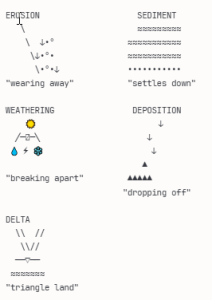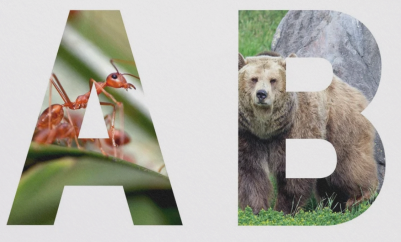Visual Learning Strategies: Transform Your Classroom with Zero Budget
Every teacher knows this frustration…we want to create an engaging, visually rich classroom, but the supply budget is already gone by October. However, the truth that changed my teaching is that most effective visual learning strategies cost absolutely nothing. This guide will show you how to transform your classroom using only creativity, basic supplies, and student power.
Why Visual Learning Strategies Work
When information is presented both visually and verbally, it creates multiple pathways in the brain for understanding and recall. Moreover, this isn’t about fancy technology or expensive posters, it’s about strategic visual communication that any teacher can implement immediately.
Research consistently shows that adding visuals to instruction significantly improves comprehension and retention. Additionally, the best part is that a hand-drawn diagram often works better than a glossy purchased poster because students can be involved creating it and contributing to the process.
Start With Your Whiteboard: The Ultimate Free Visual Tool
Your whiteboard isn’t just for writing assignments. It’s a dynamic visual learning space waiting to be transformed. Here’s an idea I saw transform a classroom . . .
The teacher designated the top right corner of a whiteboard as a “keep corner” for the week. This became a visual vocabulary space. Each Monday, she added 3-5 new terms with quick sketches. By Friday, students had seen these visual definitions dozens of times. The result? Vocabulary quiz scores jumped.
Following are a couple examples to maximize whiteboards for visual learning strategies.
Divide your board into three visual zones:
ZONE 1 displays today’s learning target with a target icon.
ZONE 2 becomes your thinking space where you map concepts in real-time as you teach.
ZONE 3 is the keep corner with visuals that stay up all week such as vocabulary, formulas, process steps, etc.
Assign meaning with colors and shapes and be consistent. For example, red straight lines always mean “important,” blue squiggles indicates “examples,” and green dots “connections.” This consistency helps students (including those who may not differentiate colors) mentally organize information without you saying a word.
Assess Any Lesson With a Quick Visual Strategy
The most powerful visual learning strategies don’t require hours of preparation. Instead, it can happen in the moment, with whatever you have on hand. Try this. . .
Give each student three sticky notes at the start of class. Throughout the lesson, encourage them to create visual summaries like a sketch, diagram, or symbol representing key concepts. At the lesson’s end, students can post their notes on the door. Now you have a quick exit ticket gallery.
Build Vocabulary Visually
Traditional vocabulary instruction often fails because students memorize definitions without true understanding. However, when students create visual representations, comprehension soars.
Give each student five index cards weekly (or cut regular paper into squares). Have them write the vocabulary word on one side, but on the reverse, they must include their own drawing, a sentence using the word, AND a memory trick. These become personal study tools that students actually use because they created them specifically for their own understanding.
As you introduce new terms, invite volunteers to add to a list on the wall with illustrations. Not every student needs to contribute – even those who just observe will benefit from seeing the visual representations created by their peers. By term’s end, you have a student-created visual dictionary covering the walls.
One biology teacher told me her students still remembered terms three years later because they remembered drawing them or watching classmates draw them.
Free Digital Tools
While hands-on materials are powerful, free digital tools can extend your visual learning strategies infinitely. However, the key is choosing tools that enhance rather than complicate learning.
Google Drawings is an often underused tool for collaborative learning. Students can simultaneously create concept maps, annotate texts, or build visual presentations. For instance, during a history unit on the American Revolution, groups collaboratively built visual timelines, added images, text, and connections in real-time.
Phone photos can be a way to document visual learning. Snap photos a step-by-step process. During a math unit on multi-step equations, a teacher photographed different student approaches to the same problem including common errors. Displaying these anonymously side-by-side, asking “What can we learn from each method?” transformed mistakes into teaching moments without embarrassment. Students discovered multiple pathways to success by analyzing each other’s visual thinking.
Subject-Specific Strategies
Mathematics:
- For fractions, students might fold notebook paper making visual sense of eighths and sixteenths.
- For word problems, students could sketch scenarios in margins, making abstract situations concrete.
- Create number lines with masking tape on floors or desks.
- Use student bodies for data – human bar graphs and pie charts bring statistics alive.
Science:
- Record weather patterns with student drawings on windows (use dry-erase markers on glass to clean off easily).
- Create element “personalities” where students illustrate periodic table elements as characters to make chemistry more memorable.
Language Arts:
- Students create “plot mountains” on notebook paper, marking rising action with drawings.
- Deepen character analysis by having students sketch characters on folded paper (inside= thoughts/feelings and outside = actions/words).
- Diagram sentences on whiteboards. (see above: assigning meaning with colors and shapes)
Overcoming Common Obstacles
Many people believe they can’t draw. This actually reinforces the value of visual strategies. Stick figures can convey concepts perfectly. Basic shapes can communicate complex ideas (see the weather example above). The willingness to try matters more than artistic skill. This applies to students AND teachers.
Visual strategies can save time long-term. A five-minute sketch during introduction often means fewer repetitions later. Student-created visuals serve double duty as learning activities and study tools. Moreover, engaged students require less behavior management, saving those instructional minutes.
High schoolers are not too old and need visual learning more than ever. They’re preparing for careers where visual communication is essential. Furthermore, older students can create more sophisticated visuals such as mind maps for essay planning, illustrated lab reports, visual debate preparations, etc. These years shouldn’t result in abandoning visuals but rather elevating them.
Get Started Now with Visual Learning Strategies
Before class, choose one visual element to add to an existing lesson. Perhaps draw your learning objective as a simple diagram. Maybe assign visual note-taking for ten minutes.
During teaching, when you explain a concept, grab a marker and sketch while you talk. Draw a timeline, diagram the process, map the connection. Drawings reinforce that understanding matters more than perfection.
For assessment, try replacing one traditional exit ticket this week with a visual option. “Draw what you learned” or “Sketch your confusion” can reveal understanding in ways words sometimes can’t.
At the end of the week, photograph the visual elements that worked. Share one success with a colleague.
The Transformation Starts Now
The most effective classrooms aren’t built with big budgets but with big ideas about how students learn. By implementing visual learning strategies, you’re revolutionizing how students understand and retain information.
All it takes is a willingness to pick up a marker, hand students some paper, and make learning visible.
Ready to master visual learning strategies? Our courses provide the research, techniques, and confidence to transform any classroom regardless of budget. Consider the following online PD courses . . .
- Visual Aids in the Classroom (1 Graduate Professional Development Credit)
- Videos in the Classroom (5 Hours)
- Virtual Field Trips (5 Hours)
- Visuals in Learning (5 Hours)
 About the Author Ellen Paxton is a respected expert in education and best known as the Chief Learning Officer of Professional Learning Board. As a two-time National Board Certified Teacher, Ellen has successfully published and customized online professional development courses and Learning Management Systems for 20 years to help teachers meet their state continuing education renewal credit requirements. Through ProfessionalLearningBoard.com, RenewaTeachingLicense.com, and ConnectedPD.com, Ellen has established solutions and maintained partnerships with several accredited universities, higher education institutions, teachers’ unions and state Departments of Education while setting strategic direction that makes a difference and overseeing implementation of popular online PD for schools.
About the Author Ellen Paxton is a respected expert in education and best known as the Chief Learning Officer of Professional Learning Board. As a two-time National Board Certified Teacher, Ellen has successfully published and customized online professional development courses and Learning Management Systems for 20 years to help teachers meet their state continuing education renewal credit requirements. Through ProfessionalLearningBoard.com, RenewaTeachingLicense.com, and ConnectedPD.com, Ellen has established solutions and maintained partnerships with several accredited universities, higher education institutions, teachers’ unions and state Departments of Education while setting strategic direction that makes a difference and overseeing implementation of popular online PD for schools.

Comments are closed.